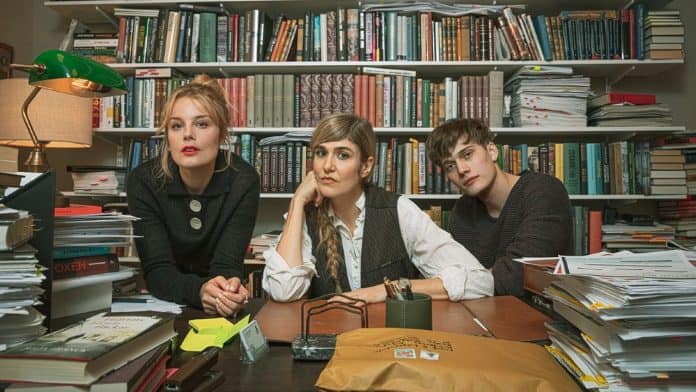Swedish series Love & Anarchy, built on the premise to counter capitalistic beliefs, ends up getting counterattacked by poor and repetitive writing
Story
Netflix’s second Scandinavian original after Quicksand, Love & Anarchy revolves around the lives of Sofie Rydman and Max Järvi, the former being a Development Consultant and the latter being an IT Technician. Both of them work for the same publishing house Lund & Lagerstedt.
Things take a fun turn when Max spots Sofie in a compromising position in her cabin, and thus begins a series of daring each other for fun. These dares, demand either of them to break societal norms in the tiniest ways possible. Another word for this harmless act is ‘Anarchy’.
Sofie’s character is shown to have penned down a novel titled Love & Anarchy. To symbolize this element, the book is always mentioned around the time Sofie is about to become an ‘anarchist’ in her own little way.
As their lives proceed, these seemingly benign acts cause big troubles. Beginning at their workplace, the effects slowly seep into their personal lives, compromising Sofie’s married life, her father and two children.
Performances
Björn Mosten debuts as Max in Love & Anarchy. Not for a moment however does he seem like a novice. Despite a decent age gap between him and Ida Engvoll, the chemistry and sexual tension that they essay on screen is exceptional.
Engvoll is the most known face on the show, given her critically acclaimed performances in A Man called Ove and Rebecka Martinsson. As Sofie, her energy might be minimal but the impact is immense.
Some supporting characters like Friedrich (Reine Brynolfsson), Denise (Gizem Erdogan) and Ronny (Björn Kjellman) also bring in their own perk to the story.
Positives
The main characters of the show are written very well, especially Sofie. Through many subtle and literal representations, the series comments on women’s issues.
Sofie’s constant need to keep her husband’s male ego intact by faking orgasms or staying mum in humiliating situations, speaks volumes about the reality of a ‘healthy-looking marriage.’
Every character has a unique arc to it. And almost all of them are either victims of capitalism or exploiters of it. The show also comments on the need for publishing houses to go digital and how that might meddle with authentic literature.
Even though Love & Anarchy is categorized as a romantic-comedy, the portrayal is quite subtle, yet effective.
Negatives
Right from the moment the series begins, it is not difficult to spot something specially different with the camerawork. To make the frame appear more subtle and human, handheld shots are often used.
But it just doesn’t go with the entire set design. From costumes to living spaces, everything is too fancy. It doesn’t look like Love & Anarchy is a series about political commentary through art per se.
The first half of the episodes aim to highlight the discomfort of being in a growing capitalistic society, and it all makes sense too. But all of a sudden, the second half starts questioning the initial premise. It is difficult to grasp the message if it takes a 180 degree turn.
And lastly, with narratives of intersectionality and feminism, it is hard to infer which side is the messaging on. The series basically tries to stay neutral but fails miserably at it.
Worth It?
Lisa Langseth chairs the director’s seat for Love & Anarchy, and also makes a small appearance. Having worked in Swedish cinema, her prowess also shows in this series.
If one can manage to look past some drawbacks in storytelling, Love & Anarchy is definitely worth a watch.
Also Read: The Queen’s Gambit review: Anya Taylor-Joy narrowly prevents a checkmate

